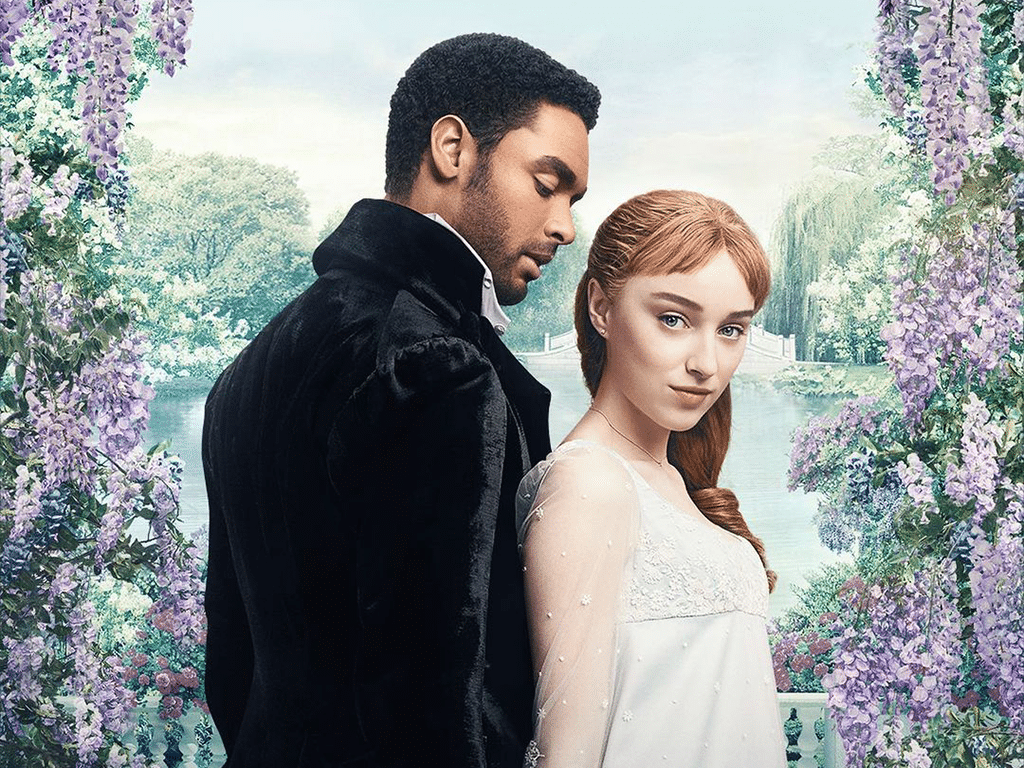
After binging the first season of Bridgerton, a few things are clear: Eloise is the GOAT, Anthony needs to take several seats, the Duke of Hastings is the sexiest man on television, and Lady Whistledown is the only Gossip Girl reboot we need.
But amongst the sex, lies, and scandal that captivated viewers since its Christmas Day release, Bridgerton has its fair share of problematic themes. Most notably, the Netflix series has received a flood of backlash for its very obvious colourism as well as its ableist plotlines.
Based on romance novels by Julia Quinn and adapted for television by Shonda Rhimes, the English period drama attempts to put a progressive spin on London’s 19th-century high society— casting people of colour sitting at various rungs of the imaginary world’s hierarchy.
The series makes one quick mention of the ton’s interracial blend of skin tones and ethnicities, noting that the king fell in love with, and married, a Black woman, Queen Charlotte. A plotline based on fact, historians have long believed that Queen Charlotte of Mecklenburg-Strelitz was England’s first mixed-race royal and thus Bridgerton illustrates a world in which she embraced her African roots.
Audiences are led to believe that the ton had a history of segregation prior to the king marrying Queen Charlotte, but the resolution was seemingly swift— so much so that season one fails to address its racist past ever again. Instead, the series focuses on women’s agency and their struggle for autonomy during that time period. And though an important theme in its own right, many feel Bridgerton accomplished this at the expense of disempowering its POC characters.
In addition to glossing over themes of racism, the Shondaland soap has been criticised for its colorism amongst the cast. Despite attempts to create a more diverse universe, the series continues to marginalise dark-skinned PoC and spotlight white or light-skinned characters.
Bridgerton features four Black main characters— Queen Charlotte, Simon Basset AKA the Duke of Hastings, Lady Danbury, and Marina Thompson— all of whom are light-skinned and/or have apparent Eurocentric features.
With few exceptions, dark-skinned characters act as support people to the ton’s wealthy families, featuring as maids, servants, and midwives, in largely non-speaking roles.
The colorism so far in #Bridgerton is blinding. That’s all I can focus on with each passing scene. I’m on episode 2 and I’ve lost sight of the story because most of the main black characters are really light & the darker characters are maids or doormen. da absolute fuq
— pronounced jenny MBA (@pronouncedjenny) December 26, 2020
The only dark woman in #Bridgerton to have lines. Two whole lines! Four minutes from the end of the final episode!
— Zenny Daye (@DayeZenny) December 28, 2020
This author watched all eight episodes for this!😂 #colorism pic.twitter.com/WT5kcCnbTP
Detractors also note that depictions of interracial relationships are problematic when the storyline flirts with white saviourism, as in the case of main love interests Simon and Daphne.
Virginal Daphne looks past playboy Simon’s emotional damage to eventually fall in love with him and seemingly change him for the better— or at least change him enough to conform with high society’s rigid ideals. Simon’s character is cold and hyper-sexual who spends his spare time fighting and partying. Daphne, on the other hand, is proper, well-mannered, and spends the entirety of the season desperately trying to live up to society’s standard of perfection. Though Quinn’s novels mention nothing about race, casting a Black man as Simon and a white woman as Daphne fuels racist stereotypes.
If Bridgerton seeks to re-imagine a more equitable co-existence for all races regardless of status, money, or class, then it can be argued that a love story between two PoC characters would have been less oppressive and more meaningful, given the lack of representation of Black love in mainstream television and film.
Many also take issue with the show’s portrayal of young Simon’s stutter used as a plot device, furthering the narrative that Simon has been “damaged” since childhood.
His father’s inability to love Simon due to his stutter, coupled with Lady Danbury’s desire to help him “overcome” the speech impediment, plays on ableist themes by conveying that Simon is not worthy of love with a disability. As noted by writer and disability activist Aparna R. on Twitter, the show also uses “overcoming” this disability as a character-building device for Simon, implying his stutter metaphorically stands between him and having a normal, happy life.
Interestingly, Bridgerton‘s ableism indirectly speaks to the ton’s history of racism, as Simon’s father, the late Duke of Hastings, felt immense pressure to produce a “perfect” heir because of the colour of his skin. He insinuates that Black members of high-society have less room for error and he feared their status could easily be taken away. This indicates the introduction of PoC into the ton was possibly contentious.
Yeah, I enjoyed it (was a fan of the books & of historical romance), but this really bothered me. Ableism shouldn’t be a character-building device. Hire more disabled writers & other cast/crew throughout the process. #Bridgerton https://t.co/7mAD4LQOeR
— Aparna R. (hiatus) (@aparna_r_writer) December 26, 2020
Bridgerton is a saucy, silly series that, all things considered, is generally a delight to watch. Despite some problematic themes and questionable storylines, there’s always the argument that fiction is for entertainment purposes and should be taken with a grain of salt.
Whether you feel Shonda Rhimes has missed the mark or you’re groveling for a season two, the light-hearted series is sure to transport you to a fictional world filled with whispers, giggles, and lots of sex.
And that’s gotta be worth something, right?


